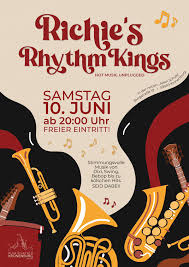
Introduction
The world of jazz music has been profoundly shaped by two significant movements: swing and bebop. Swing, characterized by its rhythmic style and big band sound, dominated the 1930s and 1940s, while bebop emerged in the 1940s as a complex, improvisation-driven genre. Understanding the kings of swing and bebop is essential for appreciating the evolution of jazz and its impact on modern music.
Kings of Swing
The swing era produced legendary figures such as Benny Goodman, often referred to as the ‘King of Swing.’ In the late 1930s, Goodman popularized swing music through radio broadcasts and concerts, bringing jazz to mainstream audiences. His band, known for its invigorating performances, included musicians like clarinetist and composer Artie Shaw, and trumpeter Harry James. Goodman’s influential 1938 concert at Carnegie Hall is often considered a pivotal moment in jazz history.
Another key player in the swing era was Duke Ellington, a composer and bandleader whose innovative arrangements and compositions expanded the boundaries of jazz. His orchestra, known for its refinement and sophistication, created timeless classics such as “Mood Indigo” and “It Don’t Mean a Thing (If It Ain’t Got That Swing).” These contributions not only helped elevate jazz as an art form but also laid the groundwork for future genres.
Kings of Bebop
As swing began to wane, bebop took center stage, characterized by rapid tempos, intricate melodies, and advanced harmonics. Charlie Parker, considered one of the leading figures in bebop, revolutionized jazz with his virtuosic alto saxophone playing and innovative compositions such as “Ornithology” and “Ko-Ko.”
John Coltrane, another beacon of bebop, was known for his intense improvisational skills and deep spirituality reflected in his music. His iconic album “A Love Supreme” is a landmark in jazz history, showcasing the depth and complexity that bebop introduced to the genre. The transition from swing to bebop highlighted a shift towards personal expression and technical mastery in jazz.
Legacy and Significance
The kings of swing and bebop left indelible marks on jazz and music as a whole. Swing set the stage for social dancing and cultural integration, while bebop ushered in a new era focusing on artistic expression and virtuosity. Today, modern jazz musicians continue to draw inspiration from both movements, blending elements of swing and bebop into their creations.
The enduring legacy of these musical pioneers is evident in contemporary genres such as jazz fusion and smooth jazz, demonstrating the lasting impact of the kings of swing and bebop. As new generations of musicians emerge, the foundations laid by these legends remain a crucial part of the jazz narrative.



